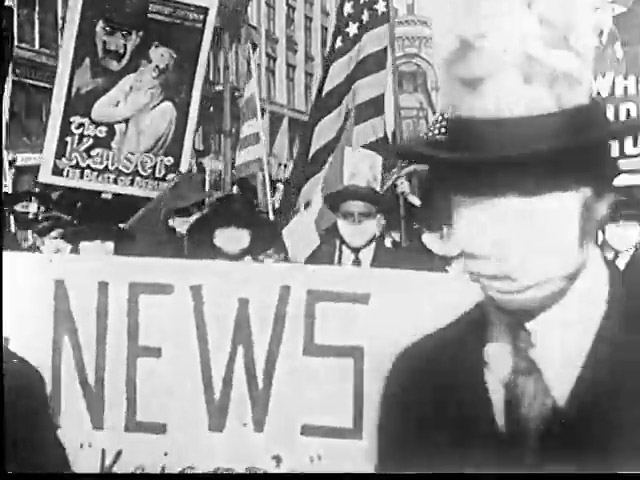The city began to suffer from the pandemic and people were asked to stay home. Initially, it was recommended that people wear masks, and an estimated 80% of the population obliged. Fines were instituted for those who chose to not to wear masks.
The city was effectively shut down. Businesses suffered. People got sick. Some died.
But soon, the pandemic cases began to go down and public health officials breathed a sigh of relief and began to recommend re-opening the city.
Residents rushed out into the city, suddenly free. The went to all of the entertainment venues and restaurants they had been denied for months. But because of the mask law, the mayor of the city was actually fined by his own police chief after going to a movie without a mask. Shortly after, the fine penalties for not wearing masks was discontinued.
Within a two months, a second wave of illness surged, worst than before. Health officers urged people to return to wearing masks but this time, they made it a voluntary option.
But even as the second wave became more serious, it was estimated that 90% of the population refused to wear masks. Businesses expressed concern about loss of sales. Citizens had spent a couple of months being hassled and fined for not wearing masks, they were having none of it. Constitutional rights were brought up, they wanted to live their lives as they wished.
A religious group argued that being forced to wear a mask and staying at home was “subversive of personal liberty and constitutional rights.” Some argued that if they were forced to wear masks, then the might also be forced to inoculate themselves and their families.
A local newspaper turned against the entire mask wearing idea – posing a series of questions to its readers.
- Was the death rate actually high enough to require wearing masks again?
- Wasn’t this just the return of a similar illness that is seasonal and not as bad as everyone makes it out to be?
- How much of this whole thing was actually just a ‘hype’ and ‘scare’ of the public?
An op-ed in another paper ran with a headline stating “What’s the Use?” after someone got sick even while following the recommended guidelines.
Word that a vaccine would fast arrive turned out to be bogus.
Finally a large group of citizens numbering in the 100’s gathered together to debate the entire thing. On public health official refused to back down – “Staying home and using masks will help”, he pleaded. But an attempt to create another mask order with fines was voted down. “The dollar sign is exalted above the health sign” said the public health official.
Two weeks later was the worst day of deaths from the pandemic were recorded.
Finally organized labor changed their opinion against masks and asked for a new mask order which was passed on a day where 600 more cases were reported.
But the public continued to show widespread disobedience to the new ordinance, refusing to wear masks. Over 2000 “public spirited citizens, skeptical physicians and fanatics” attended an event by a group called ‘THE ANTI-MASK LEAGUE’ denouncing the ordinance.
The day the masking ordinance went into effect, the number of new cases/deaths declined, the first decline in quite some time. This continued until the epidemic faded, a signal that the mask ordinance and staying at home had helped wipe out the illness.
Ultimately this was one of the American cities hardest hit by the pandemic. 673 per 100,000 people died. There were more than 50,000 cases total and 3,500 were killed.
The city? San Francisco.
The year? 1918.
This was a flu pandemic, caused by an H1N1 flu virus with no vaccine at the time. Because WWI was underway, news was censored in the United States, Great Britain and France, but not in Spain, which reported about a new deadly flu virus – Spanish news accounts then spread across the globe, giving the pandemic a name – The Spanish Flu.
Epidemiologists today have traced the actual beginnings of this flu to…Kansas. It was then exported by American soldiers to the WWI petri dish in Europe.






